Mini Strip Sees BMW And Paul Smith Pare EV Back To The Stylish Essentials
BMW's reinvented Mini was always larger and more luxurious than the classic original, but the Mini Strip co-created by designer Paul Smith pares the car back to the bare necessities. In the process, the small two-door raises some big questions about just how much in modern vehicles is necessary, and whether what we intentionally leave out might be more important than what tech and trim we include.
At first glance, you'd be forgiven for mistaking the Mini Strip for a regular Mini Cooper SE. In fact, though, the differences show themselves by what Smith and BMW opted to leave out.
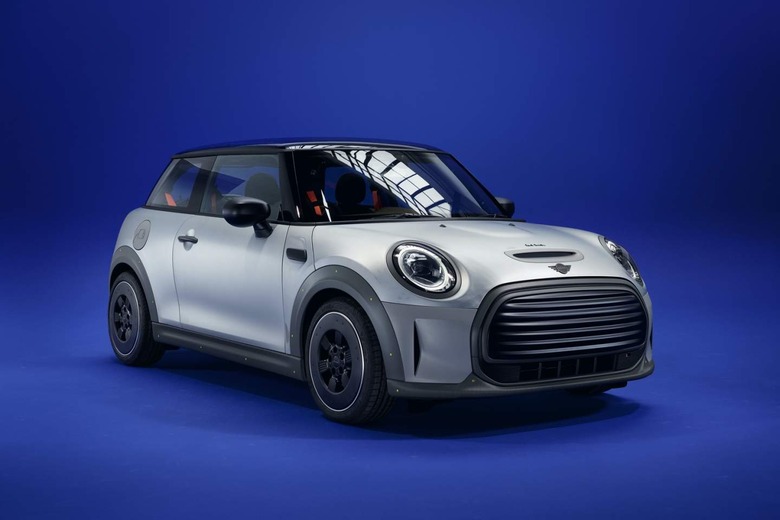
"As the name suggests, the process began by completely stripping down a three-door MINI Cooper SE and reducing it to its structural essence," BMW explains. "Only those elements that the designer viewed as absolutely necessary were then defined, implemented and put in place – with sustainability taking a front seat."
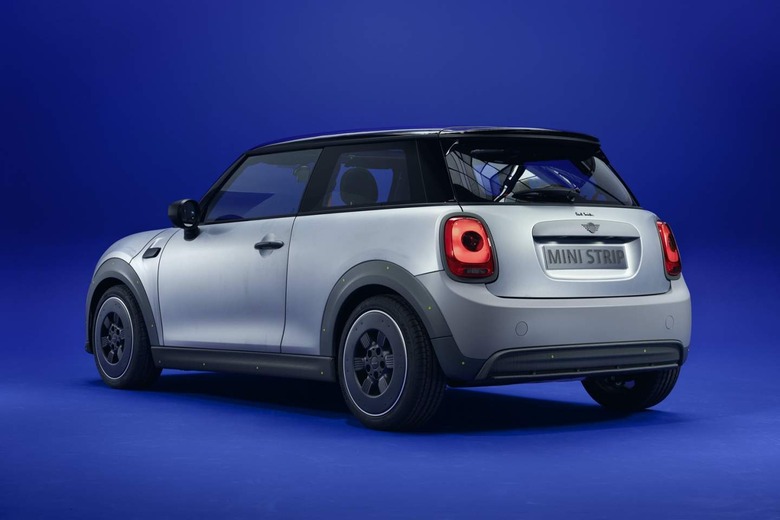
On the outside, that means a bare metal shell rather than one which has gone through the – time consuming and materials intensive – multi-stage colored paint process. A thin transparent paint layer protects the galvanized steel body panels, which still show the grinding marks from the factory. Smith refers to that grain as "the perfect imperfection"; a nod to the Mini Strip being a functional object more than anything else.

Parts of the exterior trim have been 3D printed; other pieces have been left off altogether, leaving visibility exposed screws. Recycled Perspex is used for the grille trim and wheel covers, plus for the panoramic roof which leaves big chunks of the body shell visible. Again, it's not just an aesthetic decision: BMW says it's a reference to how straightforward the Mini Strip is designed to be at the end of its useful life, when the components could be dismantled and reused or recycled.
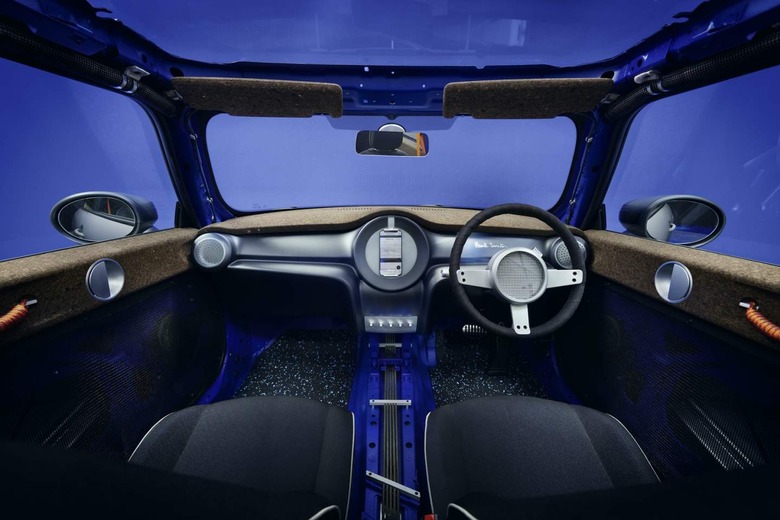
Inside, things are even more striking. Gone is the trim you'd usually find inside a Cooper SE, with the blue-colored body shell visible instead. A smartphone takes center stage, rather than instrumentation, used for media and vehicle readouts. Indeed, the only physical controls left are toggles for the windows, and the drivetrain start switch.
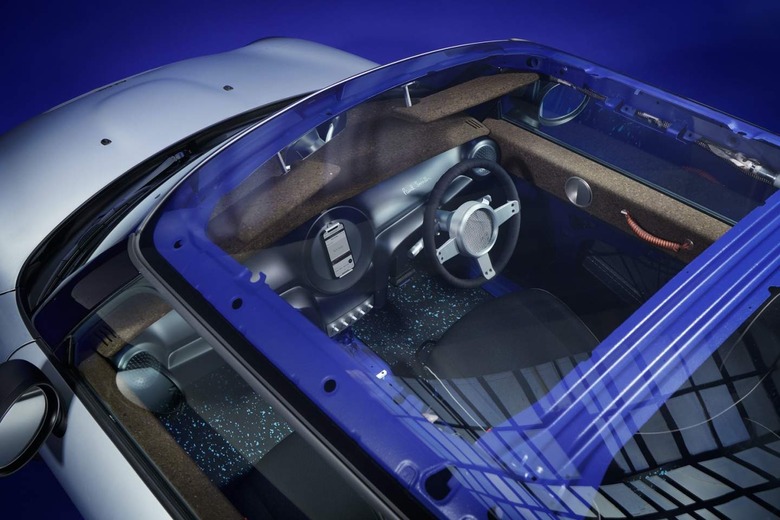
The steering wheel is cut back too, with three aluminum spokes and a rim wrapped in handlebar tape. Visible screws hold it together. The seats have knitted fabric, the floor mats use recycled rubber – with a naturally-occurring pattern from the different colored rubbers included in it – and there's recycle cork on the dashboard topper, door shoulders, and parcel shelf.
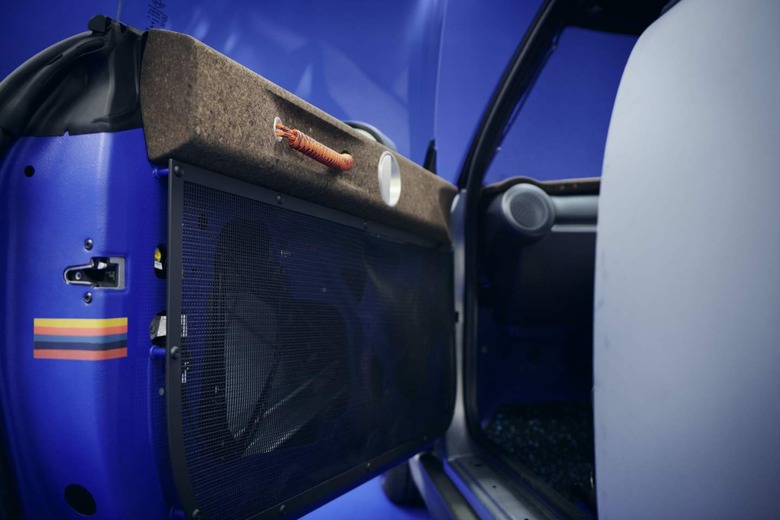
Knitted mesh covers the inner door panels and the airbag, while wound climbing rope gives a splash of bright orange for the door pulls. Milled aluminum for the door handles themselves are a solid touch.
It's not to say there aren't any stylistic flourishes: the Mini Strip is minimalistic, but it's not barebones. There's a Paul Smith fabric label at the 1 o'clock position on the steering wheel, for instance, and signature Paul Smith stripes found when you open the doors. An engraved electric plug on the charging door flap is Smith's own handiwork.
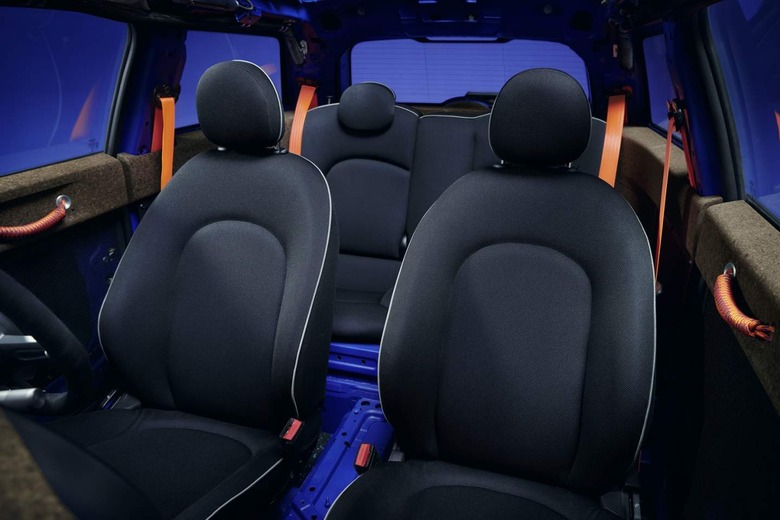
Mini sadly won't be building the Mini Strip as a production model, despite how appealing many of the ideas it features are. Certainly, in comparison to most new cars, it feels admirably light and focused. Still, BMW says that it's hoping that the concept will "provide a catalyst for more sustainable use of resources in automotive design," and it's worth noting that the automaker's recent i4 electric sedan and iX electric SUV do make use of recycled and non-animal-based materials for their cabins.
